Hardwood floors add a timeless elegance to any home, but even the finest floors are vulnerable to damage if not properly maintained. Homeowners in Alpharetta face unique challenges due to the region’s weather fluctuations, high humidity levels, and occasional water intrusions. Over time, these factors can lead to water damage, scratches, dents, and even more severe issues such as mold growth and structural decay. Many locals have even sought professional hardwood floor repair Alpharetta services to address early signs of deterioration. ideal floors and interiors, a trusted provider of expert flooring repair and restoration services in metro Atlanta, emphasizes proactive maintenance and timely repairs as the keys to preserving the beauty and longevity of hardwood floors.
This article delves into the primary causes of hardwood floor damage in Alpharetta and provides actionable solutions to safeguard your investment. It outlines the risks associated with water damage, including identifying common signs, understanding the sources of excess moisture, and implementing preventive measures. Additionally, it explores methods to prevent scratches and dents, manage sunlight exposure, deter pest infestations, combat humidity-related issues, and choose the proper cleaning products that will maintain your floors’ integrity. Each section includes practical tips and strategies that homeowners and property managers can use to ensure that their wood floors remain in excellent condition.
With detailed explanations, real-world examples, and insights on optimal maintenance practices, this guide serves both as an educational resource and a call to action. Whether you need prompt repairs after water damage or want to prevent future issues by properly caring for your floors, the strategies discussed here can be adapted to your unique situation. Emphasizing quality craftsmanship and customer satisfaction, Ideal Floors And Interiors provides targeted solutions that will help keep your hardwood floors durable and visually appealing for years to come. Hardwood repair signs can help you protect your investment from common problems while enhancing the overall aesthetics of your interior spaces.
Key Takeaways
- Hardwood floors in Alpharetta are prone to water damage, scratches, and environmental damage without proper care.
- Common causes include excess moisture, sunlight exposure, pest infestations, and improper cleaning techniques.
- Implementing preventive maintenance measures and proper repair methods can help extend the life of your floors.
- Choosing the right cleaning products and protective treatments is essential for long-term protection and aesthetic appeal.
- Professional flooring service providers like Ideal Floors And Interiors offer expert advice and repair solutions.
Identify Water Damage Risks to Your Hardwood Floors in Alpharetta
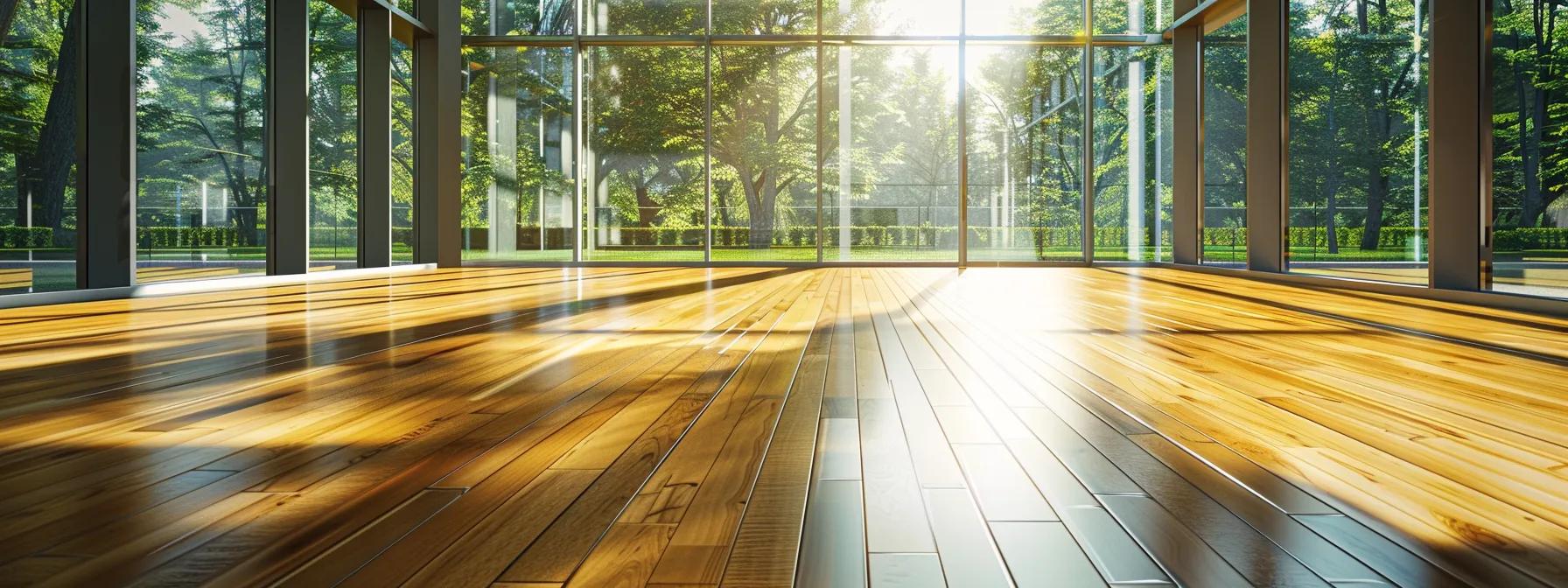
Understanding and mitigating water damage risks is crucial for maintaining the integrity of hardwood floors. Recognizing the early signs of water-related issues and addressing them promptly can prevent minor concerns from evolving into major repair projects that interrupt your daily life.
Recognize Common Signs of Water-Related Issues in Flooring
Excess moisture can manifest through noticeable symptoms on your hardwood floors. Signs include warped surfaces, discoloration, bubbling, and cracks along the floorboards. Homeowners frequently observe dark patches or stains where water has penetrated the finish, indicating that the wood underneath may be weakening. Once these issues appear, it is a clear call for immediate inspection, as prolonged exposure to water can lead to mold growth and further deterioration. Monitoring these symptoms during routine cleaning or after known water incidents helps in early detection, avoiding significant future repair costs.
Understand Sources of Excess Moisture Affecting Hardwood
Moisture in Alpharetta doesn’t solely come from spills and leaks. It can arise from high ambient humidity, condensation from poorly insulated windows, or moisture infiltration from basements and crawl spaces. Additionally, plumbing leaks hidden beneath floor coverings can silently compromise the structural integrity of wood floors. Understanding that water can come from indirect sources, such as seasonal weather changes or even improper ventilation, allows homeowners to take comprehensive preventive actions. This knowledge underpins every strategic decision regarding moisture management for your home.
Implement Preventive Measures Against Water Exposure
Preventing water damage requires a multi-faceted approach. Start by ensuring proper sealing of hardwood floors during installation, as well as using high-quality sealants to create a protective barrier against spills and humidity. Routine maintenance checks on plumbing fixtures and roof integrity are equally important. Employing dehumidifiers during periods of high humidity, and ensuring regular professional inspections, further minimizes the risk. With proper preventive steps in place, the likelihood of extensive water damage decreases significantly, preserving the floor’s appearance and functionality.
Learn Effective Methods for Water Damage Repair
When water damage does occur, swift action is critical to limit further harm. Methods such as sanding and refinishing can effectively remove minor surface damage. More severe issues may require board replacement or professional restoration services that address both aesthetic and structural repair. Repair methods typically include drying the affected area thoroughly, using specialized wood putty to fill cracks, and applying matching stains and finishes. Consulting with experts who have experience in water damage restoration ensures that the repair work is both durable and visually seamless.
Explore Products That Help Reduce Moisture Levels
A range of products can assist homeowners in controlling indoor moisture levels. Moisture barriers, underlayment systems, and advanced dehumidifiers are designed specifically for environments prone to dampness. These products not only help prevent water infiltration but also contribute to an overall healthier indoor climate, reducing the risk of mold and decay on wood surfaces. Investing in these technologies—as part of a comprehensive maintenance plan—can significantly increase the lifespan of your hardwood flooring while enhancing its overall resilience.
Prevent Scratches and Dents on Your Hardwood Floors

Scratches and dents are common issues that compromise both the aesthetics and durability of hardwood floors. With daily foot traffic, moving furniture, and the mishandling of everyday objects, surface damage can accumulate quickly. Learning how to prevent these minor injuries is key to maintaining pristine flooring, thereby preserving the overall ambiance of any property.
Discover Strategies to Minimize Surface Damage
Early prevention of scratches involves adopting careful daily routines and using protective measures. Placing rugs in high-traffic areas, especially near entryways, can dramatically reduce the impact of abrasive bottoms on wood surfaces. Additionally, cleaning the floors regularly to remove grit and debris that might scratch the surface is essential. Homeowners are encouraged to use microfiber cleaning cloths, which reduce friction and help lift dirt off the floor instead of dragging it across the surface. Implementing these strategies effectively minimizes surface damage over time.
Choose Appropriate Furniture Pads to Protect Flooring
Furniture pads act as a buffer between hardwood floors and heavy furniture pieces that can cause dents or scratches. These pads, either made of felt or rubber, are available in various sizes to suit different pieces. Installing furniture pads on chair legs, table bases, and other movable items prevents the floors from developing unsightly marks when furniture is shifted. The simplicity and cost-effectiveness of using furniture pads make them a popular choice among homeowners focused on maintaining smooth, uninterrupted floor surfaces.
Regularly Maintain and Polish Your Hardwood Floors
Regular maintenance is a cornerstone of preserving the finish and longevity of hardwood floors. Polishing not only enhances the natural shine of wood but also creates an extra protective barrier against scratches. Scheduled cleaning, buffing, and re-coating can significantly slow the accumulation of damage over time. Many professionals recommend a maintenance routine that includes both light cleaning on a weekly basis and a more intensive refinishing procedure every few years. This periodic attention helps to restore the floor’s original luster while addressing surface abrasions as they arise.
Educate Family Members on Proper Footwear Indoors
One surprisingly effective method to prevent undue damage is by establishing a no-shoes policy inside the home. Shoes can track in dirt, stones, and other abrasive particles that cause scratches and dents. Educating family members and guests about the benefits of using indoor slippers or leaving shoes at the door is a simple yet powerful step. This practice not only protects the floors but also contributes to a cleaner and more allergen-free environment.
Arrange Furniture Layout to Avoid Unnecessary Impacts
Thoughtful furniture arrangement can also reduce the risk of accidental damage. Homeowners should carefully plan the layout to ensure that high-traffic areas remain free from heavy furniture pieces that might be inadvertently bumped into. Additionally, consider repositioning furniture periodically to allow the floor surface to age evenly and minimize concentrated wear. Strategic planning in the furniture layout allows for a balanced distribution of weight and minimizes the risk of localized dents and scratches.
Manage Sunlight Exposure to Safeguard Flooring
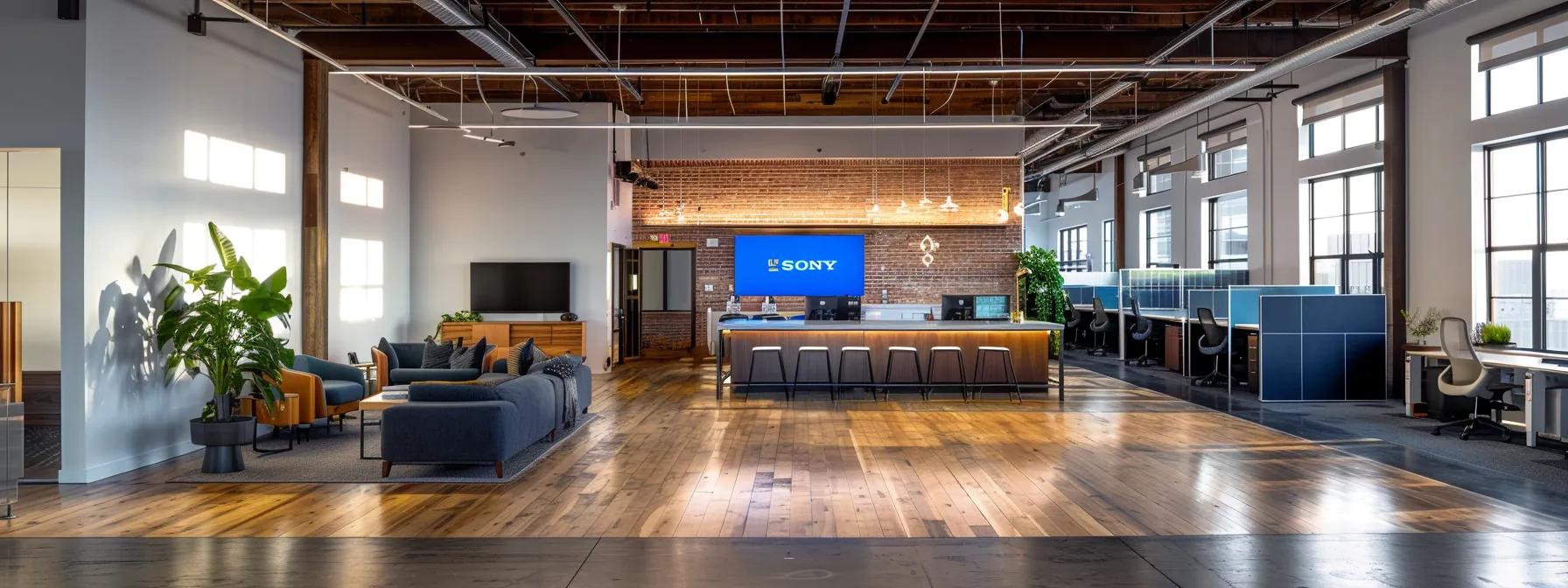
Sunlight is both a natural enhancer of a room’s ambiance and a potential adversary to hardwood flooring. Ultraviolet (UV) rays can erode the finish of wood floors, leading to fading, discoloration, and a weakened protective topcoat. By effectively managing sunlight exposure, homeowners can enjoy bright, inviting interiors while safeguarding their hardwood investments against premature wear.
Understand How UV Rays Affect Hardwood Finishes
UV rays have a significant impact on wood by compromising the chemical stability of the finish over time. Prolonged exposure to sunlight can cause the floor’s surface to fade and dull, altering its natural hue. Homeowners should monitor areas where direct sunlight hits the floor most frequently, as the transformation can affect the overall look of the room. Recognizing these effects early provides an opportunity to take preventive measures before the damage becomes severe.
Utilize Window Treatments for Effective Sun Protection
Investing in good window treatments is one of the simplest yet most effective ways to control UV exposure. Curtains, blinds, and UV-filtering window films can dramatically reduce the intensity of sunlight reaching the floors. These treatments not only protect the wood but also help in maintaining a regulated indoor temperature, which in turn minimizes thermal expansion and contraction of the floorboards. By combining aesthetics with functionality, window treatments are an essential part of protecting hardwood floors from sun damage.
Rotate Rugs and Furniture to Ensure Even Sun Exposure
Uneven sunlight exposure can cause certain areas of hardwood flooring to age faster than others, resulting in unsightly, patched fading. Homeowners can combat this by periodically rotating rugs and furniture. This simple practice ensures that no single section of the floor bears the brunt of daily sunlight, thus promoting even aging and color consistency across the entire floor. Consistently shifting the position of rugs and furniture minimizes localized damage and preserves the overall harmony of the floor’s appearance.
Schedule Regular Maintenance for Sun-Damaged Areas
For areas that have already experienced some degree of sun damage, targeted maintenance can restore the floor’s appearance. This might include professional cleaning, light sanding, or refinishing treatments to revive the worn finish. Regular inspections can help identify these concerns early on, allowing for more affordable and effective repairs. Engaging professional services ensures that repairs are carried out with precision while matching the original finish as closely as possible.
Explore UV-resistant Coatings for Enhanced Protection
Advanced protective coatings specifically designed to resist UV damage are available in the market. These coatings not only restore the appearance of sun-damaged floors but also provide long-lasting protection against future UV exposure. Homeowners looking for a durable solution should consider applying a UV-resistant finish during routine maintenance or refinishing projects. This step enhances the floor’s longevity, maintaining both its beauty and durability despite persistent exposure to harsh sunlight.
Keep Pest Infestations at Bay for Wooden Floors
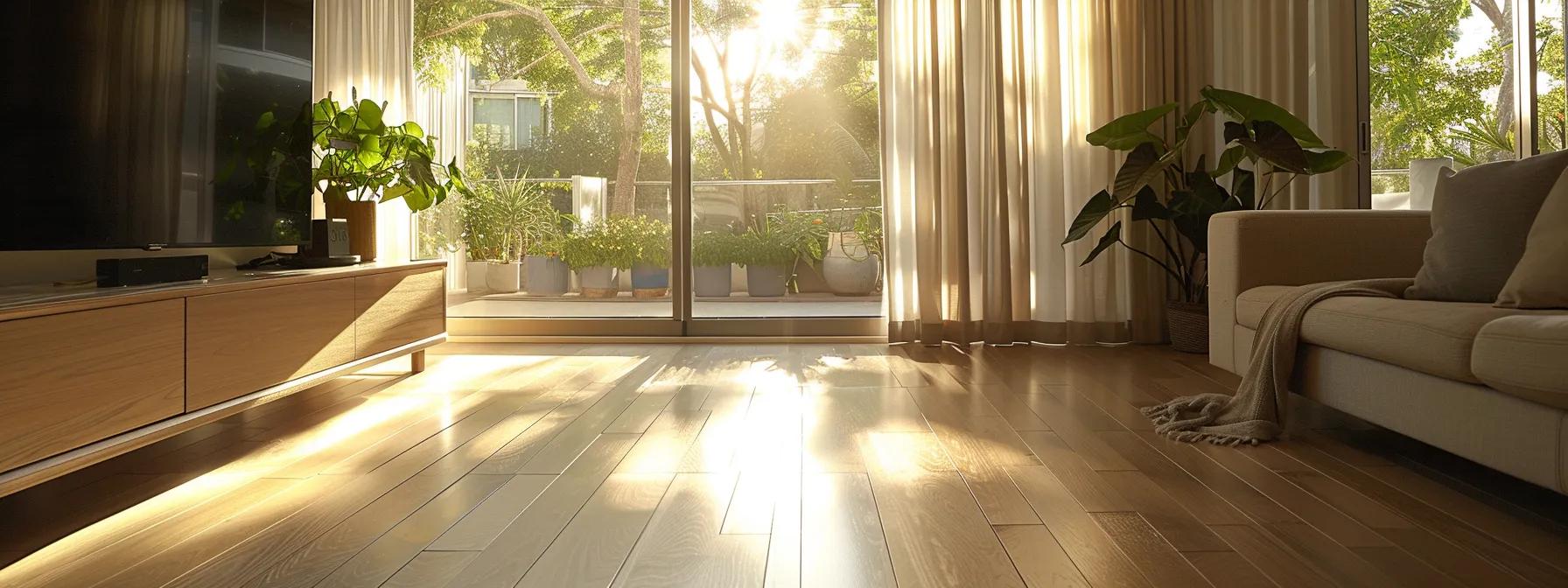
Pests, including termites, carpenter ants, and rodents, pose a constant threat to wooden floors. Infestations can weaken the structure, cause unsightly damage, and lead to costly repairs. Preventive strategies not only protect the flooring but also contribute to the overall hygiene and safety of the home.
Identify Common Pests That Damage Hardwood Surfaces
In Alpharetta, several pests target hardwood floors. Termites are notorious for silently eating through wood, while carpenter ants create nesting sites that compromise structural integrity. Additionally, rodents may chew on wood, leaving behind uneven surfaces and potential entry points for further infestation. Recognizing these pests, their behavior, and the signs of their activity—such as small holes, sawdust, or lingering odors—is essential for timely intervention.
Implement Preventive Measures for Pest Control
A proactive pest control strategy is fundamental in protecting hardwood floors. Regular inspections by professional pest control services help detect early signs of infestation before they escalate. Homeowners should seal cracks and crevices, use natural repellents, and maintain a clean environment to deter pests. These measures not only prevent infestations but also create an inhospitable environment that discourages pests from settling on the property in the first place.
Schedule Regular Inspections for Signs of Infestation
Regular and systematic inspections are imperative to catch any early signs of pest development. Even a small breach can potentially lead to widespread damage. Setting up an annual or biannual schedule for professional inspections can help homeowners stay ahead of potential infestations. Such routine checks, combined with preventive treatments, ensure that the flooring remains secure and the structure of the property is protected.
Use Natural Deterrents to Protect Your Flooring
Natural deterrents and eco-friendly pest control solutions are increasingly popular among homeowners who wish to avoid harsh chemicals. Products containing essential oils, diatomaceous earth, and herbal extracts can effectively deter pests without damaging the wood or compromising indoor air quality. Incorporating natural methods into a pest management plan aligns with sustainable home maintenance practices while providing effective protection for hardwood floors.
Repair Cracks to Prevent Pest Entry Points
Even small cracks and gaps in the flooring can serve as entry points for pests. Repairing these imperfections by sealing them with the appropriate wood putty or caulk is a simple yet effective method of pest prevention. Regular maintenance of your wood floors should include a careful inspection for any new cracks or damage that might have developed over time. Prompt repairs seal off potential entry points, effectively reducing the risk of an infestation and preserving the floor’s structural integrity.
Avoid Moisture From Humidity and Weather Changes
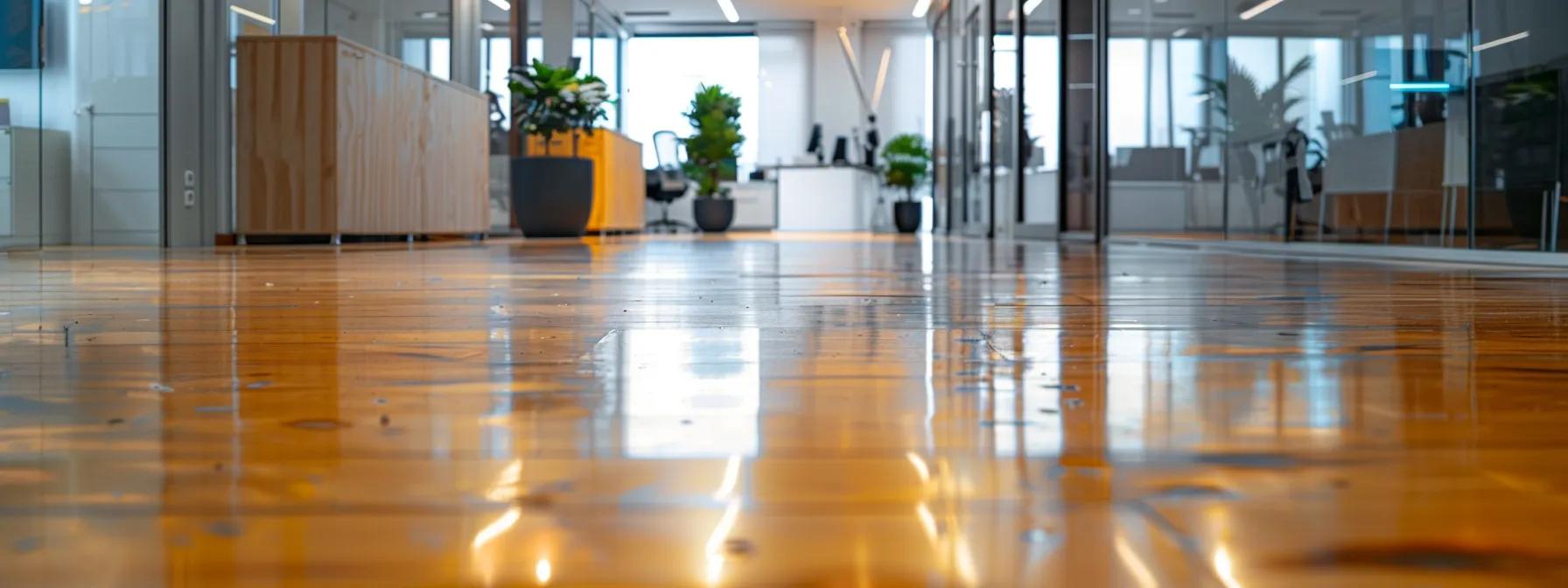
Humidity and weather-related moisture are often underestimated culprits in hardwood floor deterioration. Seasonal changes, heavy rains, and fluctuating indoor conditions can lead to expansion, contraction, and, eventually, warping of wooden floors. Effective moisture management is essential to avoid long-term damage, ensuring that wood floors remain stable and visually pleasing.
Monitor Indoor Humidity Levels for Hardwood Safety
Maintaining a consistent indoor humidity level is crucial for the health of hardwood floors. Moisture meters can provide accurate readings, enabling homeowners to identify when humidity levels are too high. Ideally, humidity should be kept between 30% and 50% to ensure minimal expansion or contraction of the wood. Regular monitoring can signal when to take corrective action, such as using a dehumidifier during particularly damp months. Staying informed about indoor conditions helps prevent the onset of mold growth and structural damage.
Invest in a Dehumidifier for Moisture Control
A high-quality dehumidifier can significantly reduce indoor moisture levels, especially during humid seasons or in areas prone to dampness such as basements. By drawing excess moisture out of the air, dehumidifiers help maintain a stable environment that minimizes the risk of wood warping and swelling. Homeowners are advised to select a unit that caters specifically to the square footage of the room or overall home. Regular maintenance of the dehumidifier, including cleaning filters and emptying collection tanks, ensures optimal performance and effective long-term protection for hardwood floors.
Seal Hardwood Floors to Protect Against Humidity
Sealing hardwood floors provides an additional layer of defense against moisture infiltration. The application of sealants and finishes designed for high-humidity environments not only enhances the floor’s appearance but also prevents water vapor from penetrating the wood. Regular reapplication of sealant ensures that the protective barrier remains intact. This measure is especially important in homes where indoor climate can fluctuate dramatically, thus preserving both the look and structural stability of the floors.
Understand Seasonal Changes Impact on Hardwood
Different seasons bring varying levels of moisture and temperature fluctuations, which can affect hardwood floors. In winter, low humidity coupled with indoor heating can cause wood to shrink and crack, whereas summer’s high humidity might lead to expansion and warping. Homeowners must remain aware of these seasonal impacts and adjust their maintenance routines accordingly. Understanding how each season affects the flooring encourages timely protective actions, such as using humidifiers or dehumidifiers and scheduling professional inspections as needed.
Keep Windows Closed During Heavy Rain or Storms
During heavy rain or stormy weather, keeping windows closed serves as a critical preventive measure against excessive moisture entering the home. Open windows can allow rain and high humidity to seep in, affecting the indoor climate and gradually damaging hardwood surfaces. By maintaining a controlled indoor environment during adverse weather conditions, homeowners can better protect their floors from sudden, damaging moisture influxes. This simple practice, combined with other moisture control strategies, helps ensure long-term floor durability.
Choose Proper Cleaning Products for Long-Lasting Floors
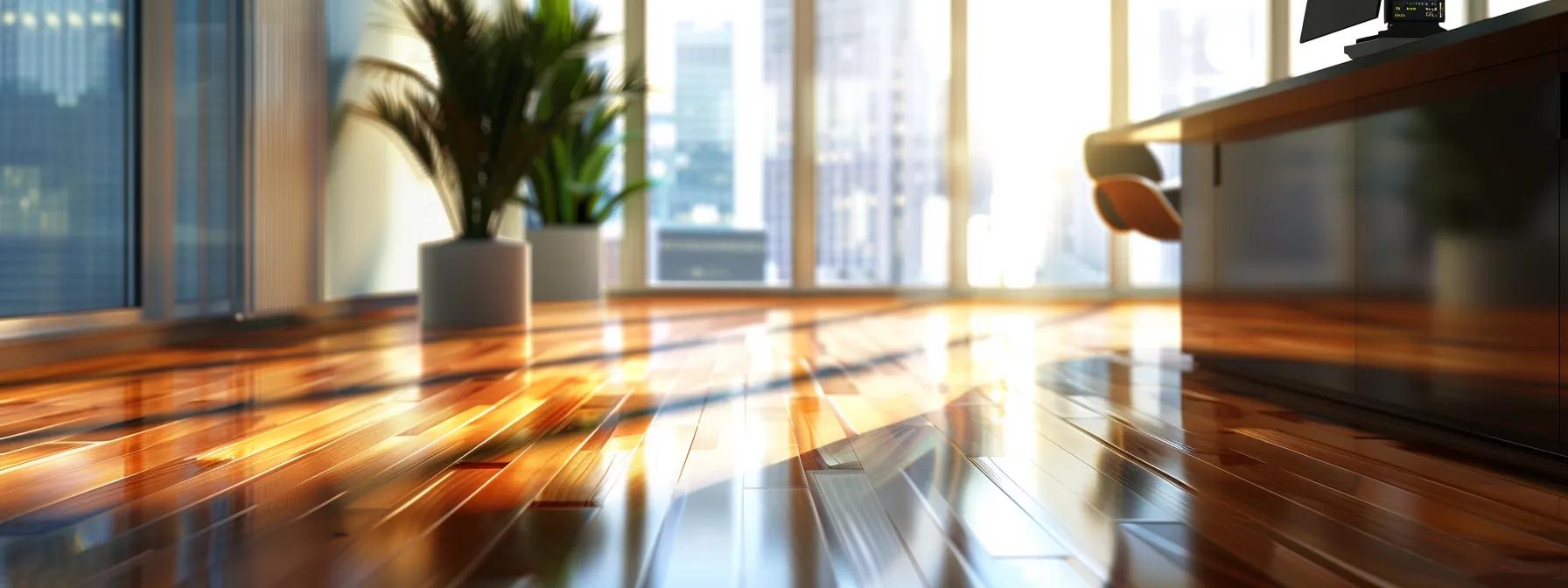
Selecting the right cleaning methods and products for hardwood floors is imperative to prevent inadvertent damage. Harsh chemicals, excessive water, or improper cleaning techniques can strip away protective finishes, dull the floor’s natural sheen, and even lead to microscopic scratches. It is important to adopt cleaning practices that maintain the wood’s integrity and keep it looking vibrant for years.
Research Safe Cleaning Solutions for Hardwood
Homeowners must invest time in identifying cleaning solutions that are specifically designed for hardwood floors. These products are carefully formulated to remove dirt and grime without eroding the floor’s finish. Research indicates that pH-neutral cleaners are the most effective at preserving wood integrity while ensuring thorough cleaning. Reading product labels and selecting solutions recommended by flooring experts are essential steps in choosing the right cleaner. Such targeted products not only maintain the floor’s appearance but also prolong its lifespan.
Understand the Correct Way to Clean Without Damage
The proper cleaning process involves minimal moisture and gentle cleaning tools. Instead of soaking floors with water, it is recommended to use a damp—rather than wet—mop or microfiber cloth. Avoid using steam cleaners, which can damage the wood by forcing moisture into the grain. The first step is to remove loose dirt with a dry dust mop, followed by careful spot cleaning with a soft cloth when spills occur. This method preserves the protective coating and prevents water from seeping into the wood, which can lead to warping and mold growth.
Establish a Regular Cleaning Schedule for Upkeep
Consistency in cleaning is crucial for the long-term upkeep of hardwood floors. Establishing a regular maintenance schedule ensures that dirt, dust, and debris do not accumulate over time, which can cause scratches when particles are ground into the wood. Regular cleaning combined with periodic deep cleans helps maintain the floor’s original luster while also identifying early signs of damage. Homeowners can schedule monthly or bi-monthly cleaning sessions, depending on the foot traffic and overall household activity. Regular upkeep not only enhances durability but also preserves the aesthetic appeal of the flooring.
Avoid Harsh Chemicals That Can Harm Flooring
Harsh chemical cleaners, including those containing ammonia or bleach, can deteriorate the finish of hardwood floors over time. Instead, opt for gentler, eco-friendly alternatives that are formulated for wood surfaces. These products effectively disinfect and clean without compromising the integrity of the protective sealant. Homeowners are advised to perform a spot test on a small area before applying any new cleaning product across the entire floor. This due diligence prevents unintended damage and ensures that the chosen products are compatible with the specific wood type and finish.
Learn About Eco-Friendly Cleaning Alternatives for Wood
Eco-friendly cleaning options are increasingly popular among homeowners who prioritize sustainability while also protecting their floors. Natural cleaning agents, such as vinegar–water mixtures, essential oils, and plant-based detergents, can offer effective cleaning results without the negative impacts of synthetic chemicals. These alternatives often provide a gentle yet thorough cleaning process, leaving no harmful residues behind. Eco-friendly solutions not only maintain the health of the hardwood floors but also contribute to a safer indoor environment for families and pets.
Frequently Asked Questions
What are the primary causes of water damage in hardwood floors?
Water damage is primarily caused by spills, leaks, high humidity, and weather-related moisture, which can lead to warping, staining, and mold growth on hardwood floors.
How can I prevent scratches and dents on my hardwood floors?
Prevent scratches by using area rugs, furniture pads, and by maintaining a no-shoes policy indoors. Regular cleaning with proper techniques also helps reduce minor surface damages.
What steps should be taken to manage sunlight exposure on hardwood floors?
To manage sunlight exposure, use window treatments like UV-filtering curtains and rotate furniture and rugs periodically. Regular maintenance of sun-damaged areas can also help restore the finish.
How do I control indoor humidity to avoid floor damage?
Maintaining indoor humidity between 30% and 50% is ideal. Use dehumidifiers, seal floors properly, and monitor moisture levels with accurate meters to prevent swelling and warping.
What cleaning products are safe for hardwood floors?
Use pH-neutral, eco-friendly cleaners that are specifically formulated for hardwood. Avoid harsh chemicals like ammonia or bleach and utilize microfiber cloths to clean without harming the finish.
Final Thoughts
Ideal Floors And Interiors understands that maintaining hardwood floors in Alpharetta involves a proactive approach to preventing water damage, scratches, and other common issues. Homeowners can protect their floors by staying vigilant against excess moisture, using appropriate cleaning products, and following established maintenance routines. The strategies highlighted in this article, from monitoring humidity levels to using UV-resistant coatings and natural cleaning solutions, offer comprehensive ways to extend the life of your hardwood flooring. By adopting these practices, you ensure that your floors remain a lasting, beautiful investment in your home.
